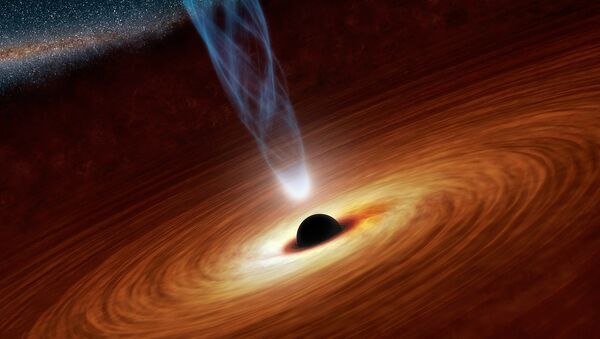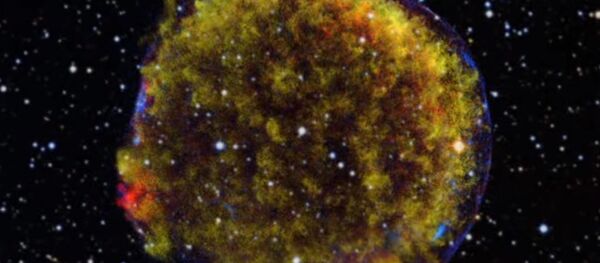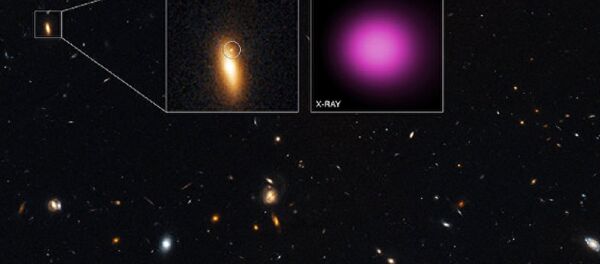Black holes are notoriously difficult to spot, and astronomers estimate there are between 100 million and 1 billion black holes in the Milky Way galaxy alone. Only 60 have been identified, however, as black holes reflect no light and emit virtually no heat, typically being identified by their interactions with nearby objects. A black hole that is in the process of devouring a star is surrounded by a super-hot ring of gas, for instance.
But a team out of Keio University in Tokyo stumbled upon a new method of detecting "quiet" black holes, those not in the process of eating a star. The Japanese team observed molecular clouds near W44, a supernova remnant within the Milky Way. Strangely, one of the clouds was found to be moving at extreme speeds for no apparent reason.
The cloud, some two light-years wide, was nicknamed the "Bullet," and found to be moving in the opposite direction expected, at some 120 kilometers per second (over 268,000 miles per hour). For it to be so large and so fast, the Keio team theorized that the Bullet was formed by a black hole.
"Most of the Bullet has an expanding motion with a speed of 50 km/s, but the tip of the Bullet has a speed of 120 km/s," wrote Keio graduate student Masaya Yamada. "Its kinetic energy is a few tens of times larger than that injected by the W44 supernova. It seems impossible to generate such an energetic cloud under ordinary environments."
There are two primary explanations regarding the Bullet. The first is that it is the result of an explosion: gas is pulled into a small black hole (estimated to be 3.5 times the size of the Sun), ignited, and rushed away. The other is an irruption: a large, high-speed black hole (estimated to be 36 times the size of the sun) made its way through W44, its powerful gravity causing a trail of super-heated gas to form in its wake.
Although researchers are not sure which hypothesis is the case, they are confident that they have found evidence of a stray black hole. The project was done through the National Astronomical Observatory of Japan (NOAJ) and used both the ASTE Telescope in Chile and the 147-foot Radio Telescope at Nobeyama Radio Observatory in Nagano, Japan.
The Keio team will continue to study the Bullet in the hopes of proving the existence of a black hole. Other, less likely possibilities are a pulsar pulling the cloud along, or a separate supernova from the one that created W44 leading to the cloud. As no evidence of pulsars or other supernovas has been found, the Keio team finds both possibilities unlikely.




